#Exoplanets
Explore tagged Tumblr posts
Text
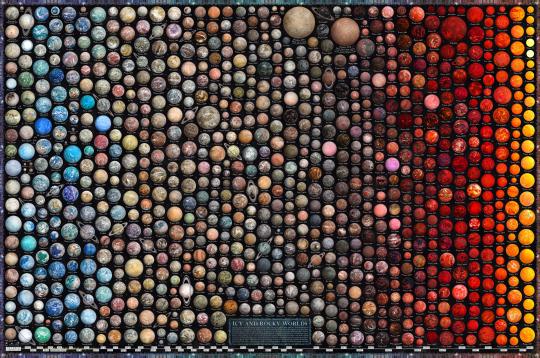
Over 800 terrestrial exoplanets visualized and arranged according to their equilibrium temperature and size.
chart by u/mVargic
12K notes
·
View notes
Text
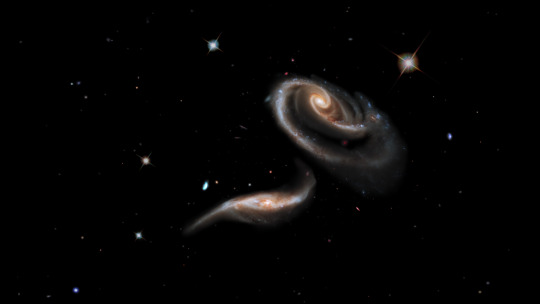
Love Letters from Space
Love is in the air, and it’s out in space too! The universe is full of amazing chemistry, cosmic couples held together by gravitational attraction, and stars pulsing like beating hearts.
Celestial objects send out messages we can detect if we know how to listen for them. Our upcoming Nancy Grace Roman Space Telescope will help us scour the skies for all kinds of star-crossed signals.
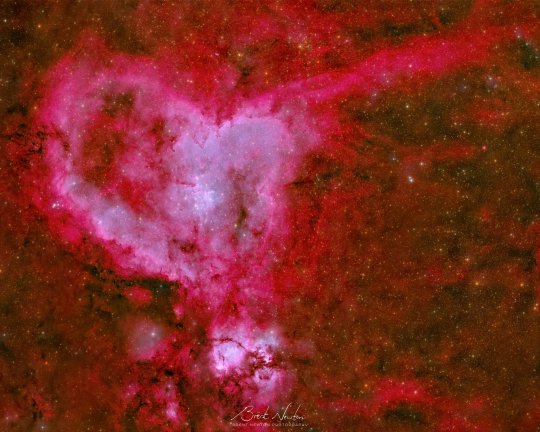
Celestial Conversation Hearts
Communication is key for any relationship – including our relationship with space. Different telescopes are tuned to pick up different messages from across the universe, and combining them helps us learn even more. Roman is designed to see some visible light – the type of light our eyes can see, featured in the photo above from a ground-based telescope – in addition to longer wavelengths, called infrared. That will help us peer through clouds of dust and across immense stretches of space.
Other telescopes can see different types of light, and some detectors can even help us study cosmic rays, ghostly neutrinos, and ripples in space called gravitational waves.
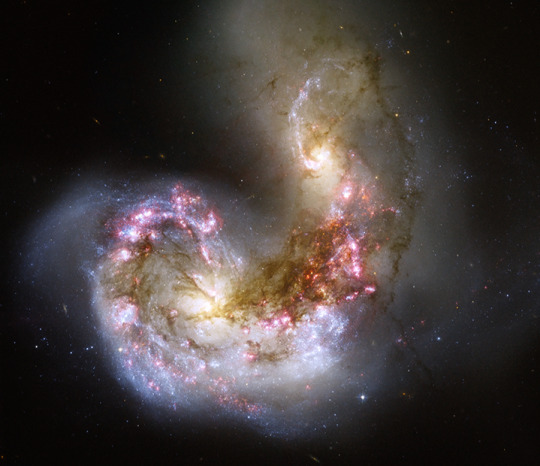
Intergalactic Hugs
This visible and near-infrared image from the Hubble Space Telescope captures two hearts locked in a cosmic embrace. Known as the Antennae Galaxies, this pair’s love burns bright. The two spiral galaxies are merging together, igniting the birth of brand new baby stars.
Stellar nurseries are often very dusty places, which can make it hard to tell what’s going on. But since Roman can peer through dust, it will help us see stars in their infancy. And Roman’s large view of space coupled with its sharp, deep imaging will help us study how galaxy mergers have evolved since the early universe.
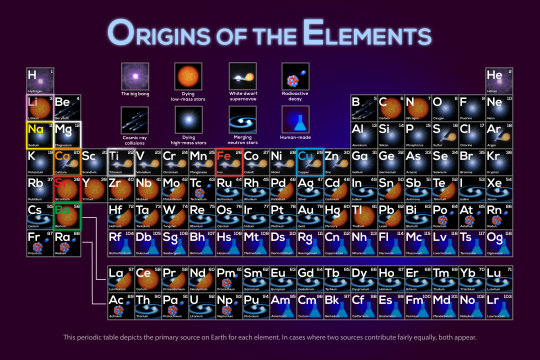
Cosmic Chemistry
Those stars are destined to create new chemistry, forging elements and scattering them into space as they live, die, and merge together. Roman will help us understand the cosmic era when stars first began forming. The mission will help scientists learn more about how elements were created and distributed throughout galaxies.
Did you know that U and I (uranium and iodine) were both made from merging neutron stars? Speaking of which…
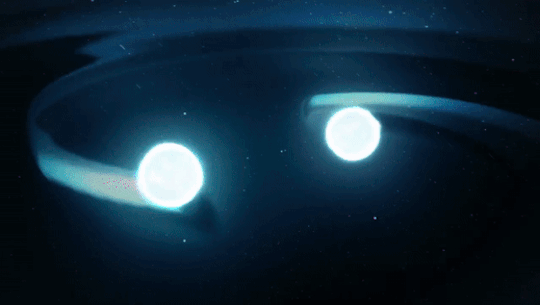
Fatal Attraction
When two neutron stars come together in a marriage of sorts, it creates some spectacular fireworks! While they start out as stellar sweethearts, these and some other types of cosmic couples are fated for devastating breakups.
When a white dwarf – the leftover core from a Sun-like star that ran out of fuel – steals material from its companion, it can throw everything off balance and lead to a cataclysmic explosion. Studying these outbursts, called type Ia supernovae, led to the discovery that the expansion of the universe is speeding up. Roman will scan the skies for these exploding stars to help us figure out what’s causing the expansion to accelerate – a mystery known as dark energy.
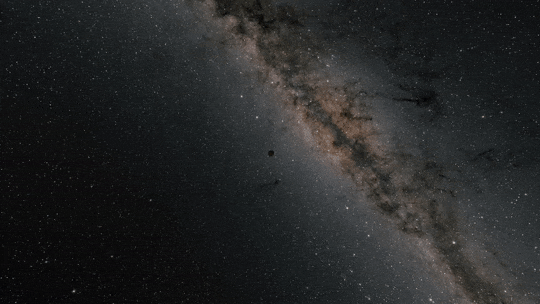
Going Solo
Plenty of things in our galaxy are single, including hundreds of millions of stellar-mass black holes and trillions of “rogue” planets. These objects are effectively invisible – dark objects lost in the inky void of space – but Roman will see them thanks to wrinkles in space-time.
Anything with mass warps the fabric of space-time. So when an intervening object nearly aligns with a background star from our vantage point, light from the star curves as it travels through the warped space-time around the nearer object. The object acts like a natural lens, focusing and amplifying the background star’s light.
Thanks to this observational effect, which makes stars appear to temporarily pulse brighter, Roman will reveal all kinds of things we’d never be able to see otherwise.
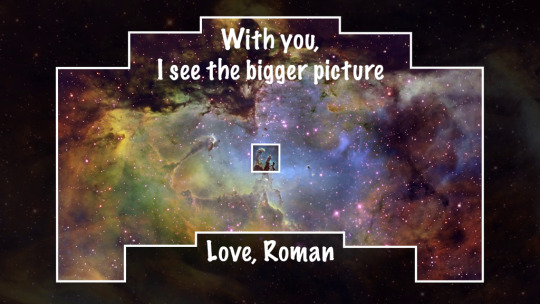
Roman is nearly ready to set its sights on so many celestial spectacles. Follow along with the mission’s build progress in this interactive virtual tour of the observatory, and check out these space-themed Valentine’s Day cards.
Make sure to follow us on Tumblr for your regular dose of space!
#NASA#astronomy#telescope#Roman Space Telescope#Valentine’s Day#space#science#STEM#nebula#chemistry#galaxies#black holes#rogue planets#exoplanets#Hubble Space Telescope#tech
3K notes
·
View notes
Text
Astronomers have discovered a new planetary oddball beyond the solar system that is as fluffy and light as cotton candy. The extrasolar planet or "exoplanet" named WASP-193 b is around 1.5 times the width of Jupiter but has just over a tenth of the solar system gas giant's mass. This makes it the second-lightest planet in the exoplanet catalog, which contains over 5,400 entries. Only the Neptune-like world, Kepler 51 d, is lighter than WASP-193 b. Located around 1,200 light-years from Earth, WASP-193 b orbits its star at a distance of around 6.3 million miles, which is about 0.07 times the distance between Earth and the sun. That means it completes an orbit of its sun-like star, WASP-193, in just 6.2 Earth days.
Continue Reading.
1K notes
·
View notes
Text

A Pair of Staggering Infographics Organizes 1,600 Planets Beyond Our Solar System by Color
892 notes
·
View notes
Text




Over the last several months, engineers have been at work in the clean room at NASA Goddard Space Flight Center, putting together the Nancy Grace Roman Space Telescope.
The Coronagraph Instrument—a technology demonstration designed to image exoplanets—and Optical Telescope Assembly—which includes the primary mirror and nine additional mirrors—are now attached to the Instrument Carrier.
With those components in place, the team then added Roman’s primary instrument, the Wide Field Instrument. This 300-megapixel infrared camera will give Roman a deep, panoramic view of the universe.
The observatory is on track for completion by fall 2026 and launch no later than May 2027.
Credit: NASA, Chris Gunn, and Sydney Rohde.
#space#astronomy#science#nasa#universe#roman space telescope#nancy grace roman space telescope#nancy roman space telescope#nasa roman#telescope#goddard#exoplanets#coronagraph#space telescope
237 notes
·
View notes
Text


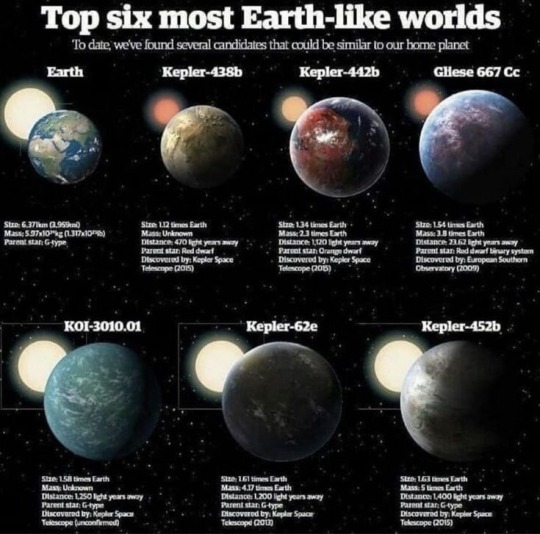

#astronomy#astronomers#universe#nasa#nasa photos#astrophotography#astrophysics#outer space#nasawebb#hubble space telescope#exoplanet#exoplanets#planet earth#solar system#outer solar system#space travel#space program#international space station#space science#space exploration#james webb space telescope#hubble#nasa science#science facts#planetary science#science#planetary nebula#our universe#the universe#astronomy facts
301 notes
·
View notes
Text
"We think it's fair to say that Homo sapiens is not the sort of species you'd want to meet in a dark alley."
#humans are space orcs#technically the authors are arguing many panetary dominate species would also be space orcs#i just like this phrase I think it's funny#book quotes#exoplanets
50 notes
·
View notes
Text
The celestial object of the day is TOI-1338b, unofficially known as Wolftopia!

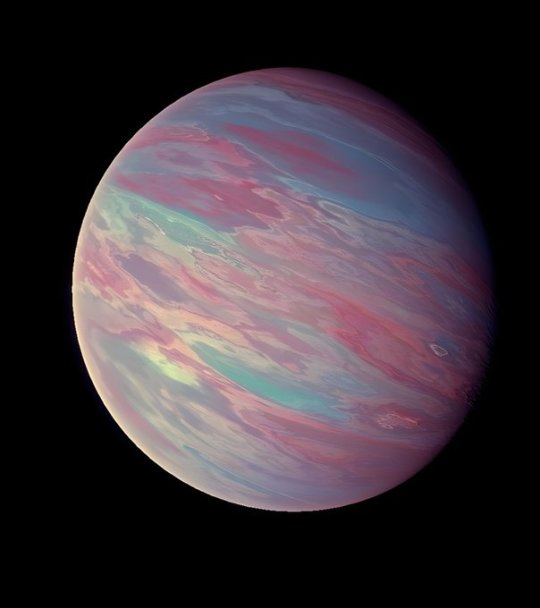
This planet orbits around two stars, causing irregularities in its orbit, making it vary between 95 and 93 days. Although its orbit will keep being stable for another ten million years, its angle towards us will change, meaning that we can't see another transit until 2031.
#Image credit: NASA#I wish I could be more specific with the credits but I can't find the original author anywhere#if someone knows please tell me#Aaand fun fact: wolftopia has a planetary sibling#Called BEBOP-1c#I love acronyms ♡♡#astronomy facts#astronomy#astrophotography#outer space#space#nasa#nasa photos#science#space exploration#space photography#celestial object of the day#TOI-1338b#exoplanets#Wolftopia
201 notes
·
View notes
Text
The Water World
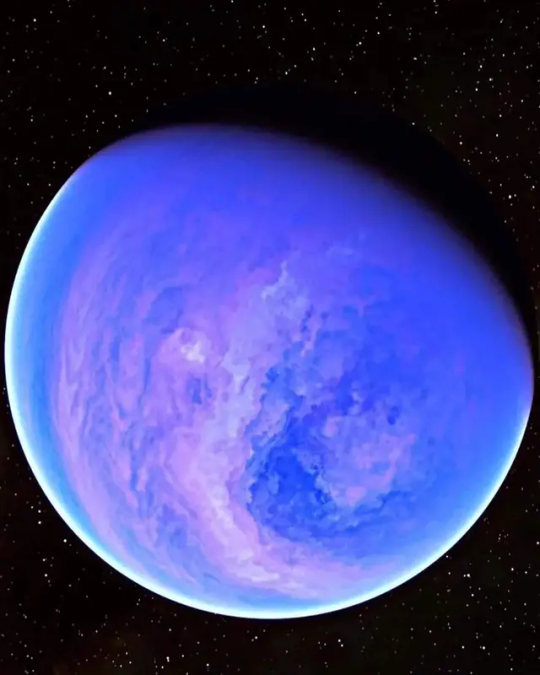
Gliese 1214b, discovered by the Hawaii-based team of the "WASP" (Wide Angle Search for Planets) project in 2009
Gliese 1214b is an exoplanet located about 48 light-years away from Earth in the constellation Ophiuchus. It orbits a red dwarf star called Gliese 1214 and is classified as a "waterworld" or mini-Neptune due to its significant water content, likely in the form of steam and vapor. The planet has a radius about 2.7 times that of Earth and is surrounded by a thick, dense atmosphere, which may contain exotic forms of ice, such as Ice VII, formed under extreme pressure. Gliese 1214b orbits its star in just 38 hours, making it a "hot Neptune" with temperatures that render its surface inhospitable to life as we know it.
81 notes
·
View notes
Text
An Exoplanet's Supersonic Jet Stream

WASP-127b is a hot Jupiter-type exoplanet located about 520 light-years from us. A new study of the planet's atmosphere reveals a supersonic jet stream whipping around its equatorial region at 9 kilometers per second. (Video and image credit: ESO/L. Calçada; research credit: L. Nortmann et al.; via Gizmodo) Read the full article
#astronomy#atmospheric science#exoplanets#fluid dynamics#physics#planetary science#science#supersonic
76 notes
·
View notes
Text
Aroace flag colorpicked from cold exoplanet 12 light years away


#color picked flags#color picked pride flags#james webb space telescope#jwst#color picked#colorpicked#colorpicked flags#colorpicked pride flags#jwst images#space#flags#pride flags#aroace#aroace pride flag#aroace flag#aroace pride#aromantic#asexual#arospec#acespec#aspec#planets#planet#exoplanets#exoplanet
33 notes
·
View notes
Text
Black Hole Friday Deals!
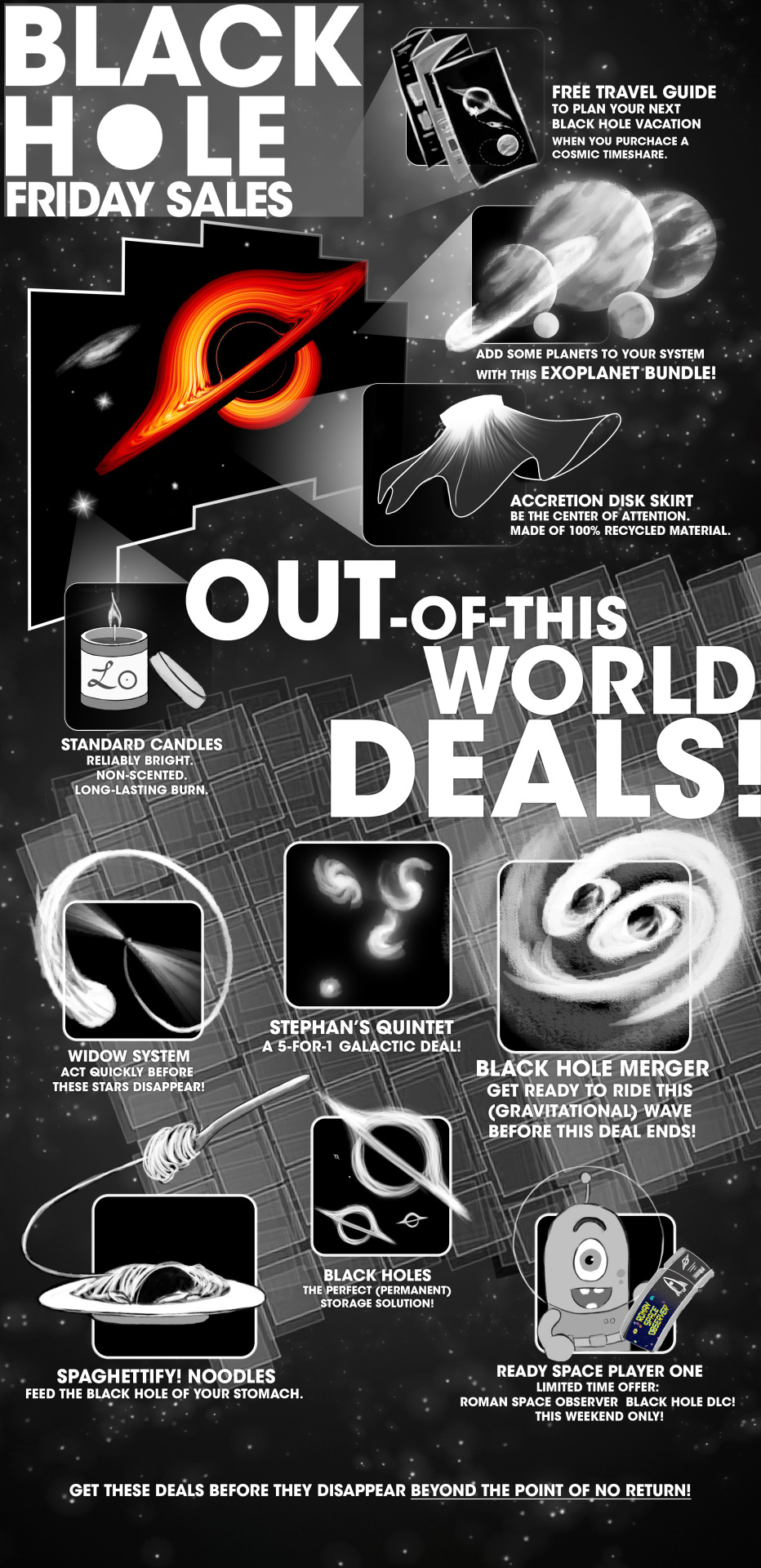
Get these deals before they are sucked into a black hole and gone forever! This “Black Hole Friday,” we have some cosmic savings that are sure to be out of this world.
Your classic black holes — the ultimate storage solution.
Galactic 5-for-1 special! Learn more about Stephan’s Quintet.
Limited-time offer game DLC! Try your hand at the Roman Space Observer Video Game, Black Hole edition, available this weekend only.
Standard candles: Exploding stars that are reliably bright. Multi-functional — can be used to measure distances in space!
Feed the black hole in your stomach. Spaghettification’s on the menu.
Act quickly before the stars in this widow system are gone!
Add some planets to your solar system! Grab our Exoplanet Bundle.
Get ready to ride this (gravitational) wave before this Black Hole Merger ends!
Be the center of attention in this stylish accretion disk skirt. Made of 100% recycled cosmic material.
Should you ever travel to a black hole? No. But if you do, here’s a free guide to make your trip as safe* as possible. *Note: black holes are never safe.
Make sure to follow us on Tumblr for your regular dose of space!
#NASA#astronomy#telescope#Roman Space Telescope#black holes#galaxies#cosmology#astrophysics#stars#galaxy#Hubble#Webb#space#exoplanets#science#physics#comic#comics#comic art
3K notes
·
View notes
Text
Hycean worlds, which are a possible kind of exoplanet with deep oceans surrounded by a thick envelope of hydrogen, could provide the best chance for the James Webb Space Telescope (JWST) to detect biosignatures, according to a new study. Those potential signs of life are a group of chemicals called methyl halides, which on Earth are produced by some bacteria and ocean algae.
Continue Reading.
190 notes
·
View notes
Text
A team led by Indian-origin astrophysicist Dr Nikku Madhusudhan has detected potential signs of life on K2-18b, a distant exoplanet 120 light years away. Using NASA’s James Webb Space Telescope, the team found dimethyl sulphide (DMS), a gas produced on Earth only by living organisms. The discovery, while not definitive, could be the strongest biosignature ever found. Dr Madhusudhan, now at the University of Cambridge, believes humanity may confirm alien life within two years if further evidence supports the findings. (more)
#space#nasa#life on other planets#nikku madhusudhan#exoplanets#jwst#biomarkers#astronomy#k2 18b#james webb space telescope#dimethyl sulphide#astrophysics
37 notes
·
View notes
Text
This is a fun paper on the arXiv: Towards the Minimum Inner Edge Distance of the Habitable Zone. In other words, given a Sunlike star, how close can we possibly get a habitable planet while gerrymandering all the other variables in our favor? The answer is about 0.4 AU, which corresponds to around 600% the insolation that the Earth receives. Toasty! You need a very dry planet, though, not only to prevent water vapor acting as a greenhouse gas, but to prevent a runaway moist greenhouse scenario. They even explore very hot atmospheres (with high pressure, to keep what water there is liquid), but note that DNA and amino acids become unstable above about 500 K.
I would have thought you would need a very thin atmosphere to reduce heat retention, but apparently if the atmosphere is too thin (<0.1 bar), the planet loses all its water in about a billion years. If pressure is too high, on the other hand, you don't get a proper water cycle (heat is too evenly distributed for precipitation to occur). But the dominant variable affecting where the inner edge of the CHZ is is really the amount of water in the atmosphere. Humidity would have to be around 1% (Earth averages 70% at sea level), and the albedo would still have to be decently high so that a good portion of solar energy was reflected back out into space. Clouds would help with that--but by the time you got enough moisture in the atmosphere to form clouds, you'd be getting enough to significantly heat the planet from water vapor acting as a greenhouse gas.
They only look at the inner edge of the CHZ because, as they point out in the introduction, in principle the outer edge can extend to infinity--a planet with sufficient internal heating from, say, the decay of radioactive elements, or tidal heating from a gas giant primary, could remain habitable even in deep space, if it had a sufficiently thick hydrogen envelope. You don't get hydrogen atmospheres around Sunlike stars because near a star solar radiation is enough to cause hydrogen to escape the upper atmosphere--which is obviously not an issue for a rogue planet.
I think in practice the hard limit for smaller stars would be further out than this, because of the tidal locking issue--slow rotators seem to be a bad fit for this kind of extremal climate. Maybe if it was a really small star, so the inner edge of the CHZ had one of those single-digit-day orbits? I kind of like that mental image: an enormous blood red sun that occupies like six and a half degrees of sky, thirteen times the size of the Sun in our own. A totally cloudless atmosphere, water confined to small patches here and there, and mostly near the poles. Because there's not enough water to properly hydrate the upper mantle, you have drip-and-plume tectonics with enormous mountainous uplands surrounded by flat sandy plains. Or even massive Mars-like uplands and huge shield volcanoes, heavily weathered by the thicker atmosphere, but still towering over the landscape. Eventually the interior of the planet may get so cold the carbon-silicate cycle stops and the atmosphere slowly leaks away, driven by the stellar wind of the close parent star.
But there are other issues with the habitability of red dwarf systems, so maybe not.
130 notes
·
View notes